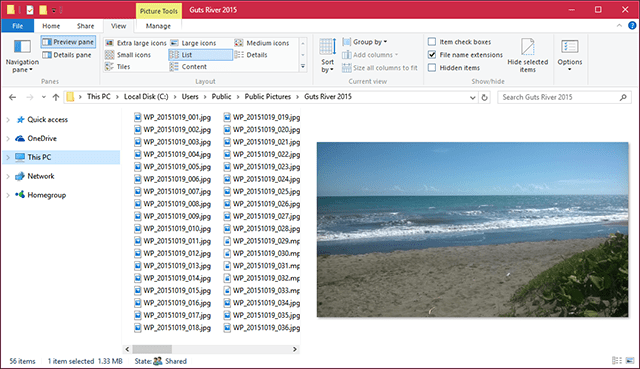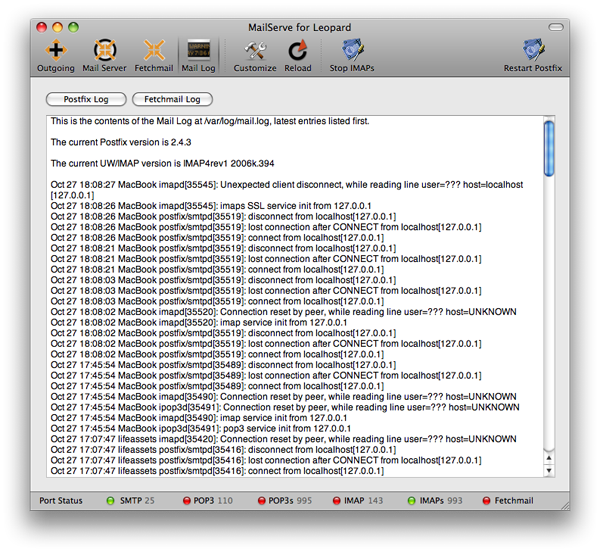Fetchmail For Windows Download
Contribute on GitHub Getmail is a simple mail retriever. In many ways, the software is a response to the complexity of. Getmail provides a simple and efficient tool for downloading email from POP (Post Office Protocol) and IMAP (Internet Messaged Access Protocol) servers.You can use getmail to download email from your Linode’s mail server powered by or or you can use getmail on your Linode to download email from one or more third-party mail providers (as long as POP or IMAP is supported) and deliver it to a local email gateway.Before getting started with Getmail, we assume that you have followed our. If you’re new to Linux server administration, you may be interested in our, and the. Install GetmailBefore proceeding, make sure your system is up to date. If you’re using Arch or Gentoo, you’ll want to refresh your repositories.
If you’re using Debian, Ubuntu, CentOS, or Fedora, you’ll want to update your repositories and upgrade all packages to their latest versions. Select from the following commands, depending on what operating system you’re running:Debian or Ubuntu: apt-get updateapt-get upgrade -show-upgradedCentOS or Fedora: yum updateArch: pacman -SyGentoo: emerge -syncSince getmail is included by default in most distributions’ software repositories, its installation is straightforward. Issue the following command to install getmail on:Debian or Ubuntu: apt-get install getmail4Gentoo: emerge getmailArch: pacman -S getmailFor CentOS, you will need to install the RPMForge Repo before you can install getmail. Download the rpmforge-release package. Choose either the 32-bit or the 64-bit version:32 Bit: wget Bit: wget DAG’s GPG key: rpm -import the package you have downloaded: rpm -K rpmforge-release-0.5.2-2.el6.rf.rpmInstall the package: rpm -i rpmforge-release-0.5.2-2.el6.rf.rpmLastly, install getmail using yum: yum install getmailWith getmail installed successfully, you can begin to configure mail retrieval. Basic Getmail ConfigurationAll getmail configuration occurs in the.getmail/ folder in the user’s home directory. The configuration is stored in a getmailrc file.
If you need to check multiple accounts, specify each account as a file beneath the /.getmail/ directory. Create the required directories and files, and set their permissions with the following commands: mkdir /.getmail/chmod 700 /.getmail/touch /.getmail/getmailrcThe following file provides a basic template for a getmail configuration file:/.getmail/getmailrc.
011121314retriever type = SimplePOP3SSLRetrieverserver = pop.example.comport = 995 username = foremanpassword = s1d30fd4nc3r6destination type = Maildirpath = /mail/options delete = true messagelog = /.getmail/log-foreman-exampleIn this example we see the following features:. Mail is downloaded using the POP3S, or POP3 with SSL method. Consider using the SimpleIMAPSSLRetriever for IMAP with SSL mail accounts. If your mail server does not support SSL, use the SimplePOP3Retriever or SimpleIMAPRetriever types. The mail server, port number, and log in credentials are specified in the retriever directive.
In this case, the server is located at pop.example.com and runs on port 110. The account credentials are for the user foreman with the password s1d30fd4nc3r6.The mail will be delivered into a Maildir formatted mailbox, located at /mail/. Note that this will deliver mail into the mail/ directory in the home directory (e.g. /home/foreman/mail/) of the user that runs getmail. Ensure that your Maildir exists before running getmail for the first time. Issue the following command to create a Maildir in /mail/ directory: mkdir -p /mail/cur/mkdir -p /mail/new/mkdir -p /mail/tmp/.The option delete = true tells getmail to remove the mail from the server after it retrieves messages. If you would like to simply copy the messages from the server and leave them intact on the server set this value to false.A log of getmail operations is logged at /.getmail/log-foreman-example in the home directory of the user who executes getmail.Modify the required options to suit the needs of your desired deployment.

This includes: retriever type, server information, authentication credentials, mailbox destinations and log locations. When your /.getmail/getmailrc configuration is complete, you can run getmail by issuing the following command at a regular user prompt: getmailCongratulations! You’ve successfully configured getmail in a basic mail delivery setup. Advanced Getmail ConfigurationGetmail is capable of delivering mail in a number of different situations beyond just downloading email from a single mail account.
This section provides an overview of several more advanced uses of getmail. Use an External Filtering UtilityIf you want to use an external program to filter the email retrieved from getmail, modify the destination configuration options in the getmailrc file to resemble the following:/.getmail/getmailrc. 1234destination type = MDAexternalpath = /usr/bin/procmailarguments = ( '-f', '%(sender)' )In this example, when getmail retrieves mail, it is passed to procmail for additional filtering rather than delivering directly to a Maildir. Procmail, like other mail delivery agents (MDAs) performs additional filtering after mail has been retrieved and before it is delivered to a users’ mail store. You may use getmail with any MDA of your choice.
Check Multiple Email AccountsIf you want to retrieve mail from more than one server, create a getmail configuration file for each server from which you need to download email. Then, when you call getmail, issue the command in the following form: getmail -rcfile getmailrc0 -rcfile getmailrc1 -rcfile /home/foreman/mail/getmailrcYou can specify as many rcfiles as you like on the command line in this format. If a path is not specified getmail assumes the files are located in the /.getmail/ directory. In the above example, the files getmailrc0 and getmailrc1 are located in the /.getmail/ directory.The final file is located in the /home/foreman/mail directory and is specified with an absolute path.
In this manner you may specify as many accounts as you need, and organize your configuration files with whatever system makes the most sense in context of your deployment. Check Email Regularly Using CronIf you would like your system to check for email regularly, you can run the getmail command regularly with cron. For a more detailed explanation of cron, you may consider the guide.
To add the “cron job”, issue the following command to edit your cronjobs: crontab -eAdd an entry to poll getmail every five minutes by adding the following line to the crontab:crontab. 1./5. getmail -quietAdding this line will cause getmail to retrieve new mail as specified in the /.getmail/getmailrc file every five minutes.
The quiet flag suppresses all non-error output, which is desirable when running in a “daemon” mode. You may specify any option for the cronjob that you can specify on the command line, including multiple getmailrc files.
After the crontab is properly configured, save the file. Getmail will now retrieve new mail every five minutes as specified in the appropriate getmailrc files. More InformationYou may wish to consult the following resources for additional information on this topic.
While these are provided in the hope that they will be useful, please note that we cannot vouch for the accuracy or timeliness of externally hosted materials.Join our Community.
Unixmail for Windows Unixmail for Windows/ / / / / // / / / / / Unixmail for Windows is a package of unix mail toolsported to MS Windows (Win32), and bundled together with aneasy-to-use installer. The bundle currently includesfetchmail, mutt, aspell/pspell, sSMTP, and GnuPG. Theexistance of this project in effect turns these tools into across-platfrom email system.The purpose of this package is to ease the pain ofunix-lovers forced to live in a Microsoft environment. Fornow, this means providing an easy-to-install package ofbasic unix mail tools.There are several benefits to using ports of exitingunix tools instead of building a new mail systemspecifically for windows.
First, it means even an immatureproject like this one can provide and amazing set offeatures. Second, it means you can use the muttrc and vimrcfiles that you have already worked hard to get JustPerfect. And finally, you can feel confidant that the fileformats used are open and well-understood.Hopefully this package will soon have procmail, abook,some sort of biff, etc.
Windows Download Free
Perhaps eventually it will eveninclude real integration with MS apps, like calendars andsuch.The source package contains a framework into which youcan drop unix tool tarballs. Then this Unixmail for Windowsframework will configure, build, and install these toolsinto a binary directory tree. The installer is a snapshotof this point in the build process. Finally, a TcL/TKscript (with some Perl at the backend) helps buildconfiguration files for all of the tools so that they willwork together under Windows, and will conform to yourenvironment.Since the build process makes few assumtions about whichversion of each tool you have, it should be simple to keepthis build up-to-date with the unix tool sources.
Version 0.6 provides a complete email path: polling a POPserver with fetchmail, reading mail with mutt, and sendingmail to an external SMTP server. Gnu Privacy Guard (GnuPG) isalso included to allow encrypting, decrypting, signing, andverifying signatures.
The pspell/aspell spelling-checkerpackage is now also included. A TCL/TK script is included toassist in installation and adding users.
Mutt in a DOS window viewing a GPG-decryptedmessage.TCL/TK-based installation and configuration.files from SourceForge. 4,111K This is an installer executable, and is all that mostusers will want. Download it, run it, and it will promptyou for all the information it needs to get you up andrunning. Check out the section below to besure you have what you need for Unixmail for Windows towork properly. 175K This is a zip file of the Unixmail for Windowssources. It provides the structure in which the originalunix sources can be compiled and run in Windows.

Besidesthe basic neededfor any installation, in order to build Unixmail forWindows you will also need original sources for all ofthe unix tools involved. You can get these from theirrespective sites, listed under, or you can get a bundle of thesources used for version 0.5, below. 5,057K This is a zip file of the all unix tool tarballs usedto build Unixmail for Windows 0.5. You should only needthis if you want to build Unixmail for Windows from thesources, instead of just using the installer, and you'retoo lazy to go to the various tools' home pages to getthe latest versions. In order to build Unixmail forWindows, you will need this xsrc zip file as well as thesrc zip file above.In order to use Unixmail for Windows, you must have alreadyinstalled:.
Fetchmail For Windows Download Windows 7
Microsoft Windows (only NT 4.0 and 2000 have beentested). Perl for Windows (I recommend the ).See for more information.100% GPL ( ) Just me, Chris Houser, so far. If you care to contribute,head over to SourceForge or write me email:Unixmail for Windows.Required software.Unix tool sources. a.k.a. GnuPG, GPG.Other free cross-platform email efforts.
Fetchmail For Windows Download Free
(Tcl/Tk). (wxWindows). (wxPython). (Java).Misc links.